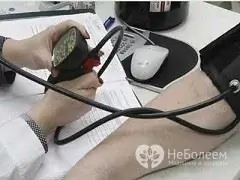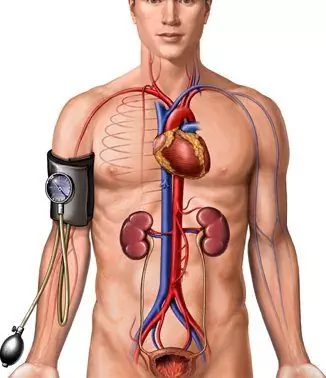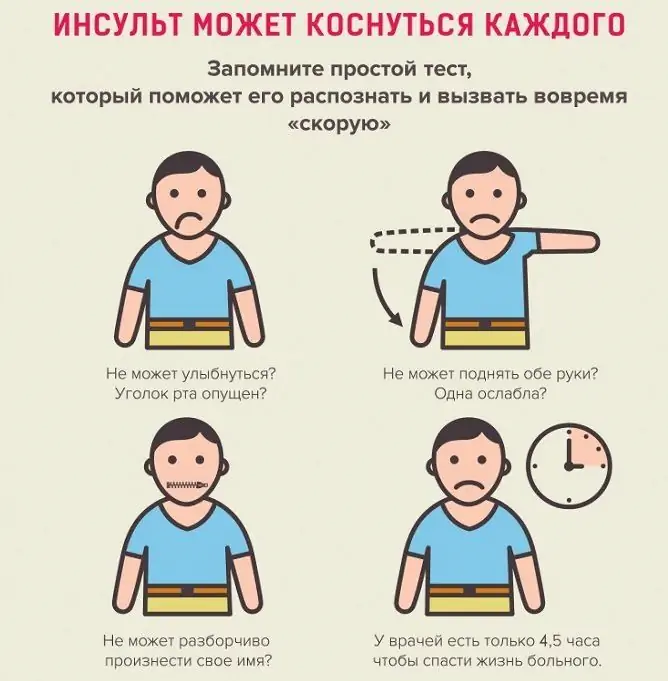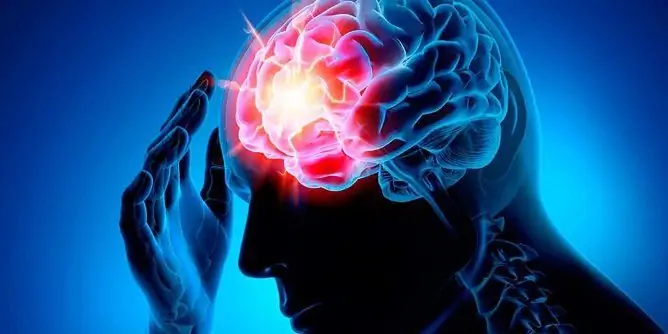- Author Rachel Wainwright [email protected].
- Public 2023-12-15 07:39.
- Last modified 2025-11-02 20:14.
Hypotension - types, signs, treatment

Hypotension is a condition characterized by low blood pressure. The normal lower limit of pressure is 100 mm Hg. for systolic, and 60 mm Hg. for diastolic. Anything below these values refers to hypotension.
Types of hypotension
Hypotension, just like hypertension, can be physiological, that is, due to natural causes, such, for example, is hypotension in residents of high mountain regions due to adaptation of the body, or it can be pathological, which has developed as a result of various diseases.
In general, there are many options for hypotension, in particular, it can be an independent condition, that is, primary, and can only act as a symptom of the disease, such is secondary hypotension, it can be generalized (central hypotension), and can be fixed only on one hand (with Takayasu syndrome). Central hypotension can be acute or chronic. Acute occurs with a sudden violation of cardiac output, a sharp decrease in blood volume, which happens with trauma with blood loss, as well as with orthostatic shock. Orthostatic shock, or orthostatic collapse, is a short attack of acute hypotension due to a sharp change in body position.
Chronic hypotension as an independent pathology can be one of the manifestations of vegetative-vascular dystonia or be explained by another nervous or cardiovascular pathology, but in most cases it has no definable causes. In this case, doctors associate its origin with a hereditary factor.
Signs of hypotension
How do you know if you have hypotension without using a tonometer? The most common signs of hypotension are general lethargy, drowsiness, pallor of the skin, increased sensitivity to cold ("freezing") and less often to heat, meteorological dependence, and frequent dizziness. They say about such people that they can hardly drag their feet, and indeed, this is how a hypotonic person usually feels. People with hypotension do not tolerate physical activity very well, responding to it with an increased heartbeat. In men, a persistent decrease in blood pressure is often accompanied by a decrease in sexual desire and potency; in women with hypotonicity, various menstrual irregularities are frequent.
Interestingly, what in the old days was called phlegmatic, it seems, is nothing more than hypotension, in any case, it has much in common with its symptoms. The languid young ladies from old novels, pale, talking in weak, quiet voices and trying to faint for any reason, can also serve as a textbook on hypotension, from which we can conclude that this condition has been known to people for a long time.
Establishing a diagnosis
It is not difficult to diagnose hypotension; for this, a description of the clinical picture and a simple measurement of pressure are sufficient. It is much more difficult to establish the cause of the low blood pressure. It is necessary to find out whether this condition is primary or secondary. Secondary hypotension is considered by doctors more closely, since it is often in this way that many common diseases manifest themselves. First of all, diseases of the cardiovascular system are excluded, then the nervous one. In addition, secondary hypotension can be a sign of a variety of diseases, from chronic tonsillitis to renal disease, so diagnosis may require quite extensive research.
Primary hypotension, especially the one that accompanies a person for many years, and sometimes all his life, is usually considered as one of the variants of the norm.
How is hypotension treated?
Treatment of hypotension is necessary, again, if its pathological nature is established. Since in this case it always acts as either a sign of a serious disorder or a symptom of the underlying disease, all attention should be focused on the general condition of the body, and the pathology that influenced the decrease in blood pressure is treated.
As for acute hypotension, then everything is clear - it is necessary to eliminate its cause as soon as possible. Orthostatic shock is not considered a serious pathology if the medical examination does not show any abnormalities, and therefore it does not need special treatment. In this state, it is enough to calmly stand for a few minutes or sit down with your head down, and it passes without any consequences.
Treatment of hypotension, which accompanies a person all his life and does not have any detectable causes, is usually not required, since it does not lead to any disturbances in the body. There is such a medical expression that hypertensive people live well, but not for long, and hypotensive people live for a long time, but badly. This must be understood in such a way that hypertension is a much more serious pathology in terms of health, but at the same time hypertensive patients are usually active and alert, sometimes even too much. Hypotension, in contrast to hypertension, is not a life-threatening condition, there is even evidence that, on the contrary, a decrease in pressure contributes to an increase in life expectancy by almost 10 years compared with the average, but the usual state of health of hypotonic patients is weakness, heaviness and fatigue.

What to do in such a situation? After all, it is much more pleasant to be active and feel a surge of energy than vice versa. Physiological hypotension is also amenable to correction, but this is usually achieved by non-drug means, and they must be used throughout life.
Correction of physiological hypotension
Physiological hypotension is just the case when tonic drinks are not just harmless, but rather useful. A cup of natural coffee in the morning, and one or two cups during the day for a hypotonic person is rather a necessity than a pleasure. Coffee can be replaced with strong tea, and both black and green tea are suitable.
In hypotonic patients, seasonal deterioration is often noted, in early spring and late autumn. During these periods, herbal stimulants of the nervous system, such as ginseng, eleutherococcus, golden mustache, Manchurian aralia, etc., can be prescribed.
Despite the fact that people prone to hypotension do not favor physical activity, it is shown to them, like no one else. Nothing contributes to the fight against hypotension more than moderate exercise - specifically moderate, since in professional athletes, on the contrary, adaptive hypotension often develops in response to excessive physical exertion.
A good result can be achieved with a massage course.
Hypotensive lifestyle is of great importance. You need to get enough sleep, but not fall into excessive sleepiness, setting yourself an optimal sleep and rest regimen. The diet should be balanced, with a sufficient content of vitamins and minerals, it is very important not to overeat.
You need to try to lead not only physically, but also emotionally active life, meet people, take an interest in current events, participate in social life - vitality is supported, among other things, by emotions.
Found a mistake in the text? Select it and press Ctrl + Enter.






